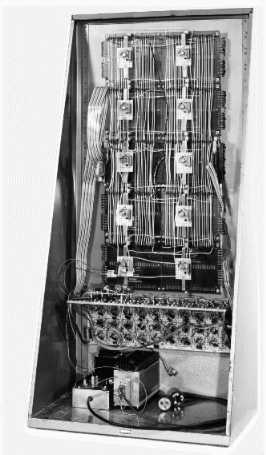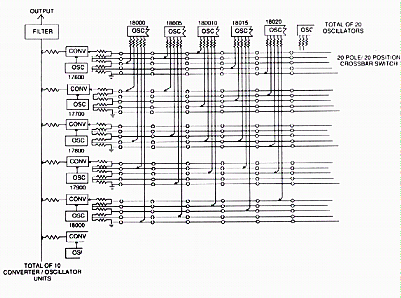 |
|
Sonde (1968) Hugh Le Caine's interest in the production of large numbers of sine waves led him to design the Sonde, an instrument that could generate 200 sine waves simultaneously. He was fascinated with the perception of complex sine-tone clusters and by theories of additive synthesis.
The Sonde simplifies
the work for a composer wishing to generate complex sine-tone mixtures.
Because so many tones were generated simultaneously, the composer
would not have to re-record, while adding more tones--and more tape
hiss with each re-recording.
Below:
Inside the Sonde The prototype Sonde was a matrix generator in a simple metal cabinet about 4 feet high and 2 feet wide with 200 sliders. The Sonde's 200 oscillators were generated by twenty oscillators and ten converter oscillators. The oscillators were designed by Dave Rocheleau to produce signals of stable amplitude.
The Sonde used thirty oscillators to generate 200 sine tones. Twenty regular oscillators were combined with ten converter-oscillators so that a total of 200 frequencies were derived, as shown in this schematic.
|
Photographs courtesy of the Music Division of the National Library of Canada.
Website questions to: info@b2bweb.ca


